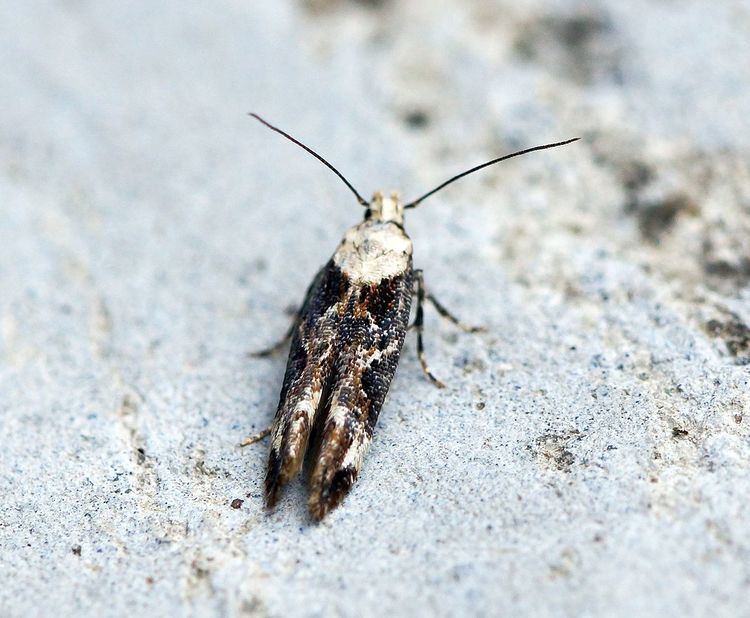Infraorder Heteroneura Rank Species | ||
 | ||
Similar Mompha, Butterflies and moths, Mompha sturnipennella, Mompha langiella, Mompha epilobiella | ||
Mompha divisella is a moth in the Momphidae family. It found from southern Scandinavia to the Caucasus and central Asia.
Contents
Description
The species is brown coloured; Thorax is brown while forewings are greyish brown. The species head is white with inward-oblique and narrowed fascia which is 3/4 in length. The scales are light greyish brown and are measured 1/4, 1/2, and 3/4 from all sides. The dorsal of a basal part is white coloured, while the hindwings are grey. Females have a broader abdomen and fascia, which is white coloured, with the seventh segment is being greyish-brown coloured. The wingspan is 10–13 millimetres (0.39–0.51 in). Adults are on wing from August to May of the following year after overwintering.
Male genitalia
The male species cacullus is slender and slightly narrowed, with broader and rounded tip. Their sacculus is tapped gradually, but is slighthly bent. The apex is blunt, reaching sometimes beyond the top of cacullus. Their body also have small anellus lobes, which are clavate. The aedeagus have three carnuti, which are of the same length. The left part is broad, and is also covered and hooked with microspicules. The middle part is bifurcate, and the last one is slender and a bit pointy, with a little distal hook.
Female genitalia
The female species posterior edge is distinct and U-shaped. The vigina of the sinus is funnel shaped, and is wider than the width of the doctus borsae. Their doctus seminalis is small and oval shaped, and is placed next to the posterior part of doctus borsae.
The species is similar to Mompha bradleyi, Mompha confusella, and Mompha subdivisella.
Ecology
The larvae feed on Epilobium species, including Epilobium montanum, Epilobium palustre, Epilobium parviflorum, and Epilobium lanceolatum. They have also been recorded on Epilobium alpinum and Chamaenerion angustifolium, but these records need confirmation. The larvae feed inside the stem of their host plant, near the base of the leaf. Feeding causes a gall to be formed. Pupation takes place in the gall inside a white cocoon. Larvae can be found from June to July.
Finish diet
In Finland, the species feeds on Epilobium adenocaulon.
